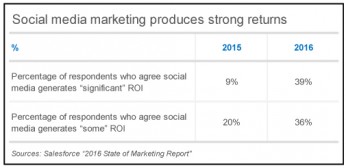Facebook, Twitter, Google+, Pinterest and the many other social media sites have changed the face of the internet. They started out with just free ways to allow businesses to market and drive traffic to their websites. However, many of the social sites now offer paid marketing options, which allows businesses to gain massive exposure to a very highly targeted market.
Paid social media advertising can be very powerful when used correctly. When you choose major platforms and you target the right segment of users, you may find that you gain a ton of great exposure. Each platform will be a bit different, but every business can benefit from paid social media marketing.
Benefits of Paid Social Media Marketing
There are several key benefits businesses of all sizes gain when they pay for social media marketing. Whether you’re running a small, local business or a large worldwide corporation, there are plenty of benefits. Some of the key benefits include:
Read more: Should you Pay for Social Media Marketing?








